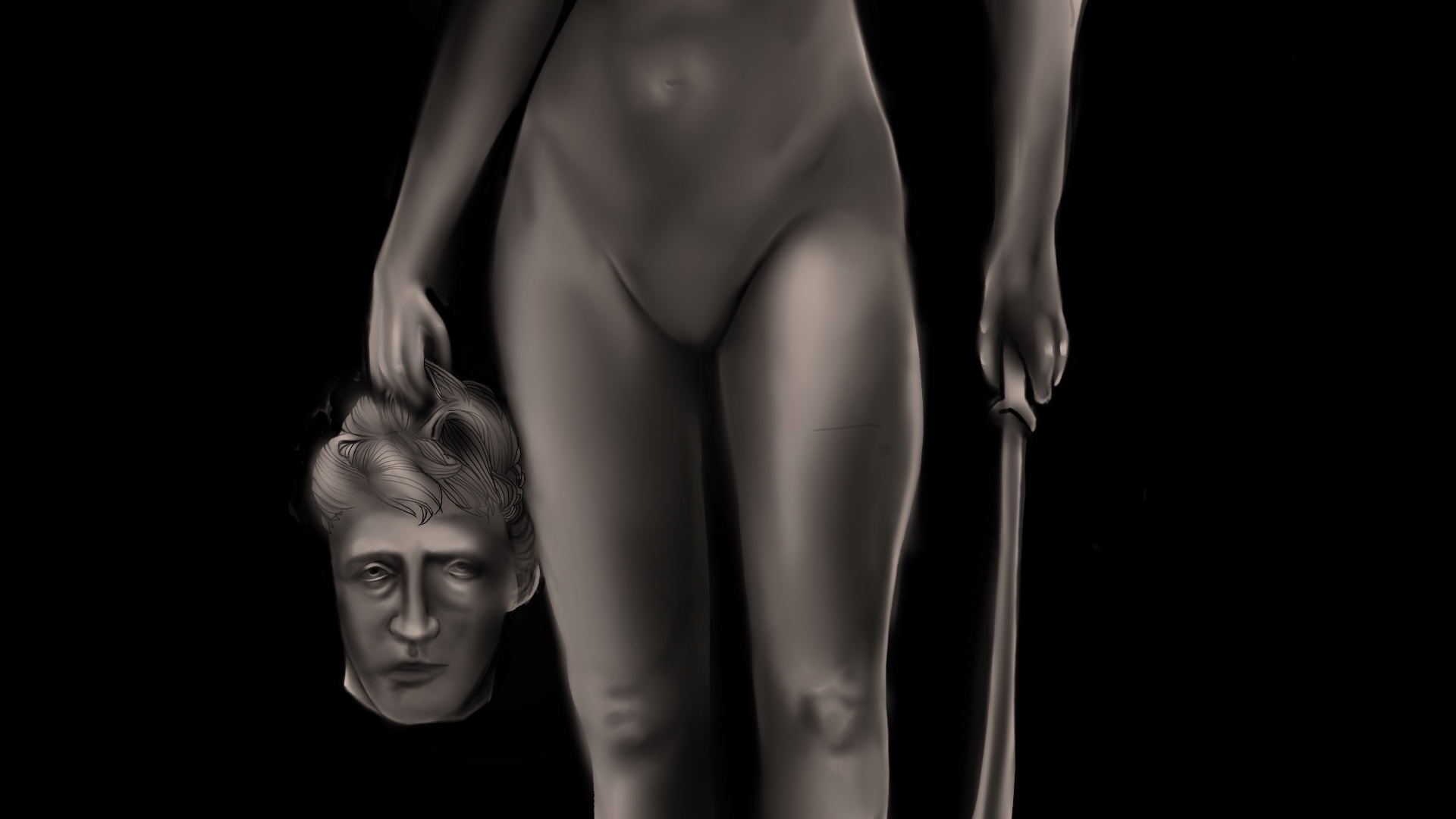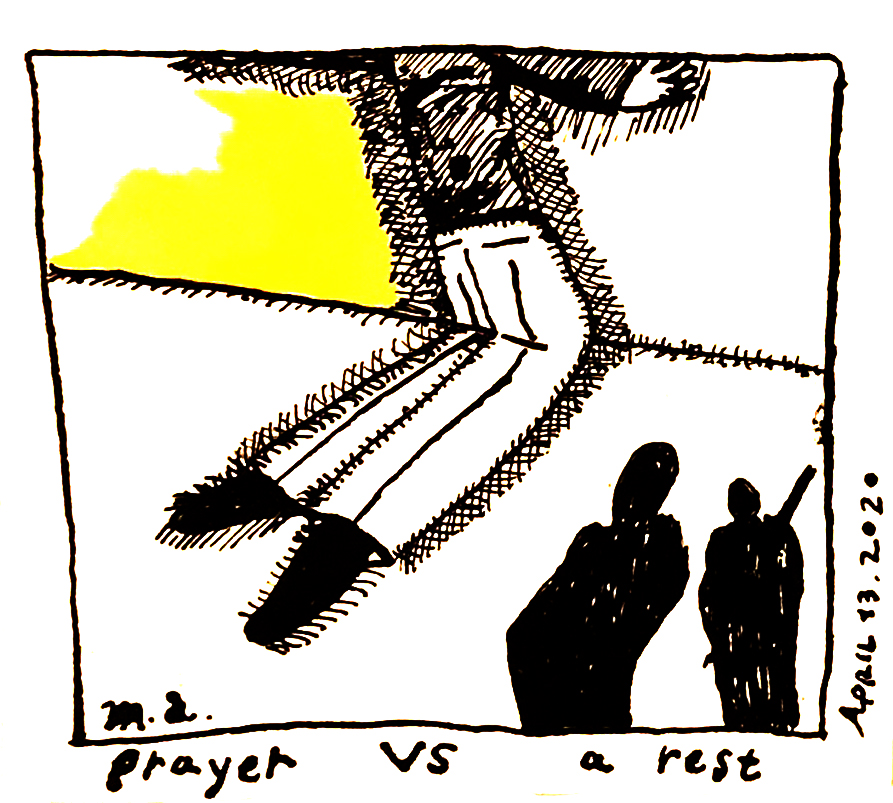
A new statue has been unveiled in New York City across the street from the criminal courthouse on Centre Street where Harvey Weinstein was convicted of two felony sex crimes in February.
The bronze statue, by Argentinian artist Lucino Garbati, portrays a lean, athletic Medusa grasping a sword in one hand, and in the other, the head of her would-be assassin, Perseus. Her eyes are steely and defiant.
In Greek mythology, Medusa is raped by Poseidon in the goddess Athena’s temple. As punishment, or (in a more feminist reading of Medusa’s story) as protection, Athena transforms Medusa’s hair into serpents. Her new hair grants her the power to turn men to stone if they dare to meet her gaze. Later, Medusa is hunted and slain by the epic hero Perseus.
Medusa’s story feels once ancient and modern, and unfortunately achingly familiar to many women. Medusa is a woman who is blamed and punished for her own assault, only to have more violence perpetrated against her. This kind of backlash is familiar to the countless women who have spoken out against their perpetrators as the #MeToo movement has unfolded.
Garbati first created his re-imagining of Medusa in 2008, long before the #MeToo movement gained widespread popularity in 2017. His sculpture was intended to be in direct conversation with the famous sixteenth century bronze sculpture “Perseus with the Head of Medusa,” which depicts Perseus, arm extended upwards, triumphantly holding the head of Medusa. Garbati wondered, what if Medusa, not Perseus was the hero? What if she was the victor and not the victim?
New York based photographer Bek Andersen stumbled across Garbati’s reimagining of Medusa shortly after the Brett Kavanaugh hearings and felt the sculpture captured the specific kind of rage many women were feeling at the time. She reached out to Garbati, and the rest is history. Medusa now meets the gaze of all who leave the courthouse and, to many, became a symbol of the movement.
Yet, criticisms swiftly followed the sculpture’s unveiling. Why wasn’t a female artist selected? Critics scoffed at her lack of pubic hair and argued that this was yet another example of women of color being sidelined within the #MeToo movement. Why, in a movement founded and fostered by a Black woman to promote healing, is a statue sculpted by a man that depicts a white woman holding the tools of the oppressor in one of her hands being used to symbolize and summarize #MeToo?
The controversy surrounding Garbati’s “Medusa With the Head of Perseus” isn’t all that surprising. These types of Internet-fueled controversies pop up with near daily frequency these days. On one hand, the gripes about the Medusa are warranted. At their core are big, meaty debates about power, justice, and representation. And yet, I’m not sure that pointing out that Garbati’s Medusa has no pubic hair is the way we are going to right society’s inequities.
In truth, I find these sorts of controversies exhausting. The complaints often feel like couch-potato activism, bent on canceling aspects of culture that don’t fit with the morality du jour. It seems all too easy to craft angry tweets at creators and their works of art without offering any solutions to the problems they present. However, I don’t want to write this controversy off as another silly Twitter debate. I do think it brings up a lot of interesting questions about how we think about art right now. Should art be used as a tool of social justice? Who gets a say in what kind of art makes it into public consciousness? Is the biography of the artist important, or should we focus on the work itself? What is the role of public art anyway?
I also didn’t find the Medusa a particularly charged or galvanizing piece of work. So I wondered: What would a satisfying piece of public art in response to #MeToo movement look like?
While I’m not sure what the work itself might look like, there’s another piece of public art that was recently installed in New York City’s Madison Square Park in response to the George Floyd protests this summer. The story of the artwork, the artist, and how it came to be in public space provide a model that addresses some of the complaints about Garbati’s Medusa. The installation, entitled “Light of Freedom,” was commissioned by the Madison Square Park Conservancy’s deputy director and senior curator Brooke Kamin Rapaport. Rapaport reached out to artist Abigail DeVille to create the 13-foot tall sculpture in response to the Black Lives Matter protests that swept the country over the summer.
“Light of Freedom” consists of a large lattice structure constructed to look like the skeleton of the Statue of Liberty’s torch (which sat on view in Madison Square Park from 1876 to 1882). A mass of jumbled mannequin arms sits within the torch, painted blue like the hottest part of a flame. The torch is surrounded by scaffolding, suggesting that the reach for justice is in itself a labor, and offering a nod to the African Americans whose labor built much of New York City. It’s a confronting piece of work that is thoughtfully symbolic.
DeVille is a Black woman and New York City native. She is also an artist whose practice is deeply informed by the historical and present-day experiences of African Americans. Her work explored unseen histories and their links to the present day long before she was selected by Rapaport for the project. But it isn’t DeVille’s race and gender alone that make “Light of Freedom” not only less controversial, but arguably a more potent symbol of a movement than Garbati’s “Medusa With the Head of Perseus.” It’s because “Light of Freedom” was created from a deeply personal feeling and lived experience. It’s truth-telling, art-making at its best.
A single piece of art cannot represent an entire movement, especially movements as diverse as #MeToo and Black Lives Matter. I don’t feel that Garbati’s sculpture is or was meant to be offensive. In fact, I think Garbati’s re-telling of Medusa’s story through his sculpture is really great. But the story of how it came to sit across from the courthouse does illuminate blind spots about who is visible within the #MeToo movement. The story behind “Light of Freedom” provides an alternative: Public art in conversation with a movement, without losing any of the raw truths that make art worth making.







